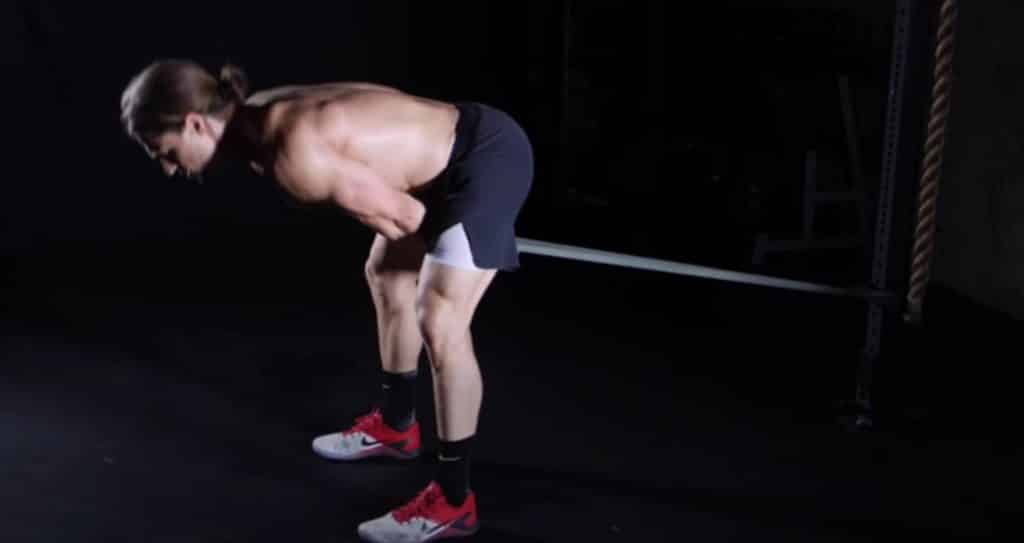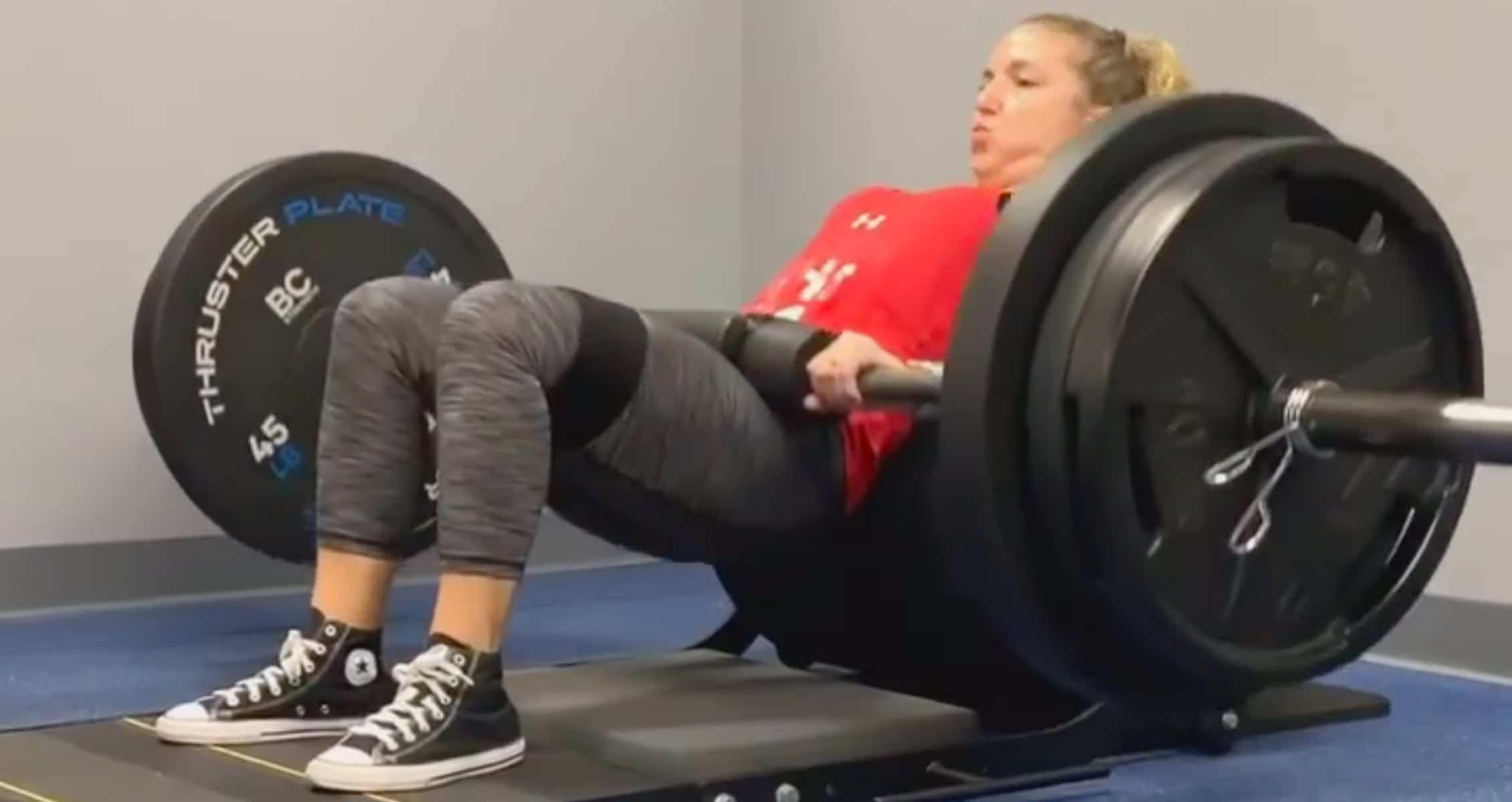The banded pull through improves explosive hip power.
The pull through is an exceptional compound exercise that effectively targets your hamstrings and glutes. Incorporating pull throughs or hip thrusts into your exercise regimen helps break through plateaus and promotes overall strength development. Today, we’ll be examing the banded pull through.
One of the most popular versions of pull throughs is the cable pull through. But what do you do when the cable machine is always used at your gym or even in rough shape? The banded pull through is a variation of the exercise that uses resistance bands and targets the same muscles.
Doing a banded pull through also offers separate benefits that make it a great exercise on its own. However, it’s important to use proper form and the right kind of band when doing this exercise. In this guide, we look at why the banded pull through is an exercise you should add to your training and even more alternatives that you can use to strengthen and tone your muscles.
Techniques and Muscles Worked
The banded pull through primarily targets your erector spinae, glutes, and hamstrings. You’ll enjoy many benefits when you add a banded pull through to your workout as long as you maintain good posture. Control your tempo and focus on using the right technique to avoid injuries. Below is a step-by-step guide on how to do the banded pull through.
- Choose a good band for your workout, depending on your desired intensity. A thicker band means more resistance.
- Set up your band by attaching it to a stationary, stable anchor point lower than your hips. Then grip the band using a double overhand grip with both hands.
- Next, step over your band with the anchor behind you. The band should be passing underneath your legs.
- Walk outwards until you get lots of tension in your band, and then bend over by hinging at your hips. Ensure that you still have a good amount of tension in your band and that your back is straight. This is your starting position.
- Pull your body upwards by pulling the band between your legs and pause when you reach the top.
- Hinge at your hips to bend over, return to starting position, and complete your rep. Ensure that you keep your back straight while doing this.
- Repeat for the desired number of reps.
Benefits
Research shows occasionally using resistance bands for your routines can enhance your power and strength (1). Banded pull throughs, in particular, offer numerous benefits for your posture and lower back. Below are some important reasons why you should do this exercise.
More Time Under Tension
One benefit of using resistance bands to pull through is increasing your muscles’ time under tension. As a result of this, this exercise increases muscle hypertrophy and growth in your hamstrings and glutes. This study shows how time under tension can lead to more muscle hypertrophy depending on how and when you apply it (2).
Better For Your Lower Back
Those with lower back issues might find this exercise better for training their posterior chain muscles. When doing it, your glutes and hamstrings do most of the work. This allows you to train properly and increase your volume without stressing your lower back.
Great For Training At Higher Speeds for Hip Power
When doing a banded pull through, you can use a controlled and slow movement or go rapid and explosive. This is due to the accommodative resistance that bands offer. Cable machines will offer periods of momentary loss of resistance and make a lot of sound.
Carryover to Deadlifts and Pulls
When doing banded pull throughs, the tension during the eccentric phase will give you feedback that helps you understand what this position should feel like. This helps to teach proper hinging and reinforces your hip flexion. Hinging in proper form and the proper hip flexion are important when doing exercises like deadlifts and pulls.
Banded Pull Through Alternatives
The banded pull through is a great exercise that can help you increase the mobility and strength of your lower body. However, if you need variety, we have more exercises below that do the same. Varying your exercises is a great way to avoid a strength plateau and keep your workouts interesting (3).
Kettlebell Swing
Kettlebell swings also target your posterior chain muscles as the banded pull through. They use explosive force, too, and can be the next step in your routine after banded pull-throughs.
Barbell Hip Thrust
The barbell hip thrust also works on your glutes and can increase their size and strength. The barbell hip thrust is done with barbells, allowing you to use more weight. Hip thrusts also works on the other posterior chain muscles that the banded pull through does.
Cable Pull Through
The cable pull through is the cable machine alternative of this exercise. It targets the same group of muscles and offers a greater range of motion, which can give a more intense workout.
Dumbbell Squat
Dumbbell squats work on your glutes and hamstrings too. However, this particular exercise also builds your quads.
FAQs
What muscles do banded pull-through work?
The banded pull through works on the muscles in the posterior chain or your legs. Check the guide above for a more detailed breakdown of the specific muscles involved.
What are the benefits of resistance band pull-through?
One of the best benefits of the resistance band pull through is that you can do it anywhere. All you need is a stable anchor at a point lower than your hips. Check the article for more benefits and why you should do this routine.
Are banded pull ups effective?
Yes, banded pull ups are an effective way to build muscle strength and endurance. They can also help you improve your bodyweight pull-ups as they build your strength.
Follow us on Instagram, Facebook, and Twitter for more exercise guides!
References
- Joy, J. M., Lowery, R. P., Oliveira de Souza, E., & Wilson, J. M. (2016). Elastic Bands as a Component of Periodized Resistance Training. Journal of strength and conditioning research, 30(8), 2100–2106. https://doi.org/10.1519/JSC.0b013e3182986bef
- Diniz, R. C. R., Tourino, F. D., Lacerda, L. T., Martins-Costa, H. C., Lanza, M. B., Lima, F. V., & Chagas, M. H. (2022). Does the Muscle Action Duration Induce Different Regional Muscle Hypertrophy in Matched Resistance Training Protocols?. Journal of strength and conditioning research, 36(9), 2371–2380. https://doi.org/10.1519/JSC.0000000000003883
- Krzysztofik, M., Wilk, M., Wojdała, G., & Gołaś, A. (2019). Maximizing Muscle Hypertrophy: A Systematic Review of Advanced Resistance Training Techniques and Methods. International journal of environmental research and public health, 16(24), 4897. https://doi.org/10.3390/ijerph16244897









